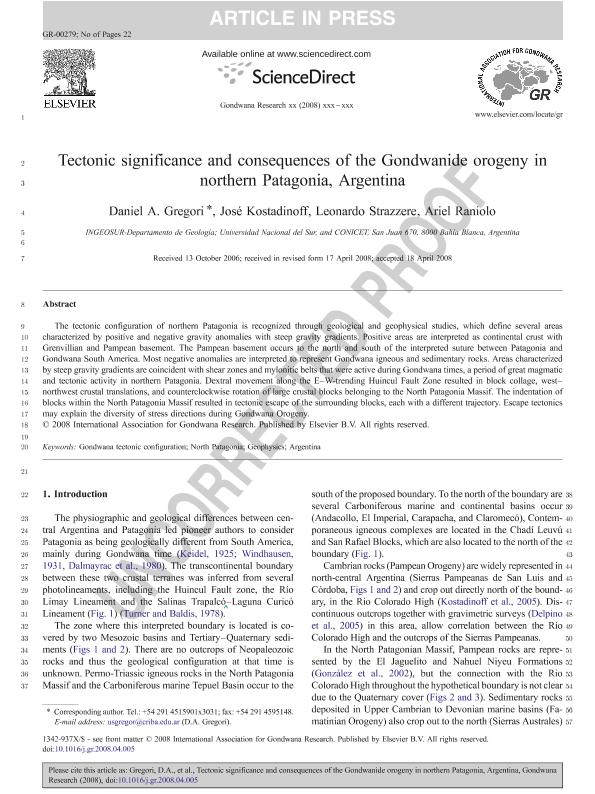Artículo
Tectonic significance and consequences of the Gondwanide orogeny in northern Patagonia, Argentina
Fecha de publicación:
10/2008
Editorial:
Elsevier Science
Revista:
Gondwana Research
ISSN:
1342-937X
Idioma:
Inglés
Tipo de recurso:
Artículo publicado
Clasificación temática:
Resumen
The tectonic configuration of northern Patagonia is recognized through geological and geophysical studies, which define several areas characterized by positive and negative gravity anomalies with steep gravity gradients. Positive areas are interpreted as continental crust with Grenvillian and Pampean basement. The Pampean basement occurs to the north and south of the interpreted suture between Patagonia and Gondwana South America. Most negative anomalies are interpreted to represent Gondwana igneous and sedimentary rocks. Areas characterized by steep gravity gradients are coincident with shear zones and mylonitic belts that were active during Gondwana times, a period of great magmatic and tectonic activity in northern Patagonia. Dextral movement along the E-W-trending Huincul Fault Zone resulted in block collage, west-northwest crustal translations, and counterclockwise rotation of large crustal blocks belonging to the North Patagonia Massif. The indentation of blocks within the North Patagonia Massif resulted in tectonic escape of the surrounding blocks, each with a different trajectory. Escape tectonics may explain the diversity of stress directions during Gondwana Orogeny.
Palabras clave:
Argentina
,
Geophysics
,
Gondwana Tectonic Configuration
,
North Patagonia
Archivos asociados
Licencia
Identificadores
Colecciones
Articulos(INGEOSUR)
Articulos de INST.GEOLOGICO DEL SUR
Articulos de INST.GEOLOGICO DEL SUR
Citación
Gregori, Daniel Alfredo; Kostadinoff, Jose; Strazzere, Leonardo; Raniolo, Luis Ariel; Tectonic significance and consequences of the Gondwanide orogeny in northern Patagonia, Argentina; Elsevier Science; Gondwana Research; 14; 3; 10-2008; 429-450
Compartir
Altmétricas




